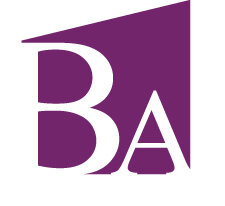The Myth of Stretch Goals
Some CEOs see their role as one of providing so-called BHAG's. They set high bars and then "turn their people loose." The concept sounds great, the goals look inspiring, and if the structures are in place in the organization, some magic might accidentally happen. Unfortunately, this is NOT the case in most organizations, and magic is not something I want companies betting on for their strategy.
I've worked with several companies lately that have been trying to put the cart before the horse. Setting strong, powerful, inspiring goals is GREAT IF and only IF done after the organization figures out its true competitive advantages.
There is a process to strategy and trying to skip parts generally leads to mediocrity. Want to get to a BHAG or "Stretch" goal that has any value? Then consider this:
START EXTERNAL TO THE ORGANIZATION – No one buys from your organization because you need them to do so. Customers consider all of your competitors and a variety of other substitutes long before they make a purchase. Put the entire management team in the customer's shoes (B2B or B2C) and view the world from their perspective.
SPLIT WHAT YOUR ORGANIZATION DELIVERS INTO THREE (3) CATEGORIES
WHAT CUSTOMERS EXPECT – Most of what most companies do every day is 'table stakes' to customers. These are the ordinary activities that must be done, must be done well, but are simply expected by customers. These elements of the business must be identified, refined, six-sigma d, and cost contained. We want to put as much time, effort, financial resources, and management firepower on what separates the organization from its competitors.
WHAT CUSTOMERS PAY EXTRA FOR – What truly separates your organization in the mind of the customer? Why will they pay you more? Why will customers bypass your competitors and chose your organization? Ultimately, what are your Resource-Based Advantages NOW? There is a lot of analysis to do this.
WHAT MIGHT CUSTOMERS PAY EXTRA FOR – Given what your organization has now, what could the organization do that would constitute another true competitive advantage? In my experience, this leads to many potential choices that are generally limited by management resources, financial capabilities, and a desire to have only a limited number of moving parts at once. Companies use several criteria to pick these new competitive advantages.
NOW SET THE MISSION / VISION/ BHAG – Once this understanding and analysis have been completed (and there is a lot that goes into the bullets above), an organization can establish where they want to go with whatever terminology makes their hearts sing.


